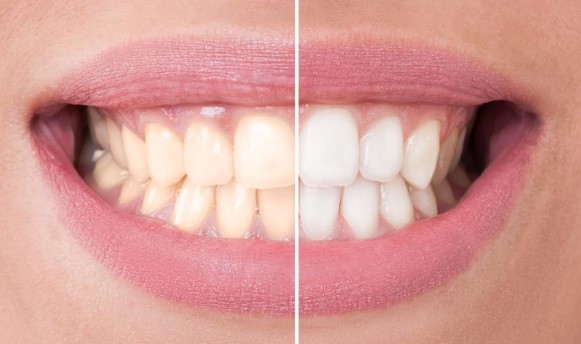Maintaining good oral hygiene is essential for a healthy smile and overall well-being. One of the key aspects of oral care is effective plaque removal. Plaque, a sticky film of bacteria, can lead to various dental issues if not properly managed. Learning how to efficiently remove plaque is the cornerstone of a strong dental care routine.

Maintaining oral hygiene is an essential aspect of overall health and well-being. Plaque, a sticky film of bacteria that accumulates on teeth and gums, is a common concern that can lead to various dental problems if not effectively managed. In this comprehensive guide, we will delve into the world of plaque removal, exploring various tips and techniques to ensure a healthy and vibrant smile.
Understanding Plaque: The Silent Culprit
Plaque is a biofilm that forms on teeth and gums, primarily composed of bacteria and their byproducts. If left unaddressed, it can harden into tartar, leading to a range of dental issues such as cavities, gum disease, and bad breath. Plaque formation is a continuous process, making regular and proper removal crucial to maintaining oral health.
1. Brushing Technique Matters
The foundation of effective plaque removal lies in proper brushing technique. Use a soft-bristle toothbrush and fluoride toothpaste. Hold the brush at a 45-degree angle to the gumline and use gentle circular motions. Be sure to brush all surfaces of your teeth, including the fronts, backs, and chewing surfaces. Don’t forget your tongue – it’s a haven for bacteria.
2. Floss Regularly
Flossing is often overlooked but plays a vital role in removing plaque from areas that your toothbrush can’t reach. Gently slide the floss between your teeth, forming a C shape around each tooth. Glide the floss up and down to remove plaque and debris. Aim to floss at least once a day.
3. Embrace Mouthwash
Mouthwash can be a valuable addition to your oral hygiene routine. It helps rinse away bacteria and food particles, leaving your mouth feeling fresh. Choose an antimicrobial or fluoride mouthwash for optimal plaque control. Remember, though, that mouthwash isn’t a substitute for brushing and flossing.
4. Opt for an Electric Toothbrush
Electric toothbrushes are designed to provide superior plaque removal compared to manual brushes. Their oscillating or rotating movements can effectively dislodge plaque and stimulate gum health. Many models even have built-in timers to ensure you brush for the recommended two minutes.
5. Mind Your Diet
Your diet significantly influences plaque formation. Limit sugary and starchy foods that feed bacteria, leading to plaque buildup. Opt for a balanced diet rich in fruits, vegetables, lean proteins, and whole grains. Drinking water after meals can also help wash away food particles and bacteria.
6. Chew Sugar-Free Gum
Chewing sugar-free gum can be a handy way to increase saliva production, which helps neutralize acids and wash away bacteria. Look for gum with the American Dental Association (ADA) Seal of Acceptance to ensure it’s effective and safe for your teeth.
7. Regular Dental Visits
Even with impeccable home care, professional dental cleanings are essential. Dentists use specialized tools to remove stubborn tartar that brushing and flossing can’t eliminate. Regular check-ups also allow your dentist to detect and address potential issues early on.
8. Try Interdental Brushes
Interdental brushes, also known as proxy brushes, are small brushes designed to clean between teeth and around dental work like braces or bridges. They can be particularly useful for individuals with wider gaps between their teeth.
9. Oil Pulling
Oil pulling is an ancient technique that involves swishing oil (usually coconut oil) around your mouth for a few minutes. Some claim that it can help remove bacteria and plaque, though more research is needed to confirm its effectiveness.
10. Proper Technique for Children
Teaching children proper oral hygiene techniques from a young age is crucial. Use age-appropriate toothbrushes and toothpaste. Demonstrate and supervise their brushing and flossing until they can do it effectively on their own.
11. Consider Using a Plaque Disclosing Agent
Plaque disclosing agents are products that temporarily stain plaque so you can see where it’s located on your teeth. This can be a helpful tool to identify areas that need more thorough cleaning.
12. Avoid Tobacco Products
Tobacco use not only stains teeth but also increases the risk of gum disease. Quitting smoking or using smokeless tobacco products can significantly improve your oral health and reduce plaque accumulation.
13. Don’t Neglect Your Tongue
The tongue harbors bacteria just like your teeth. Use a tongue scraper or your toothbrush to gently clean your tongue’s surface. This can help improve breath and reduce bacterial growth.
14. Mindful Snacking
If you snack frequently, especially on sugary or sticky foods, your teeth are exposed to prolonged periods of plaque-forming conditions. Try to limit snacks and opt for healthier choices.
15. Address Dry Mouth
Saliva helps neutralize acids and rinse away bacteria. If you suffer from dry mouth, also known as xerostomia, talk to your dentist. They can recommend products or treatments to alleviate this condition.
In conclusion, plaque removal is an ongoing endeavor that requires consistent effort and proper techniques. By integrating these tips and techniques into your daily routine, you can maintain a bright and healthy smile while preventing dental problems down the road. Remember, your oral health is an integral part of your overall well-being, so invest the time and care it deserves.